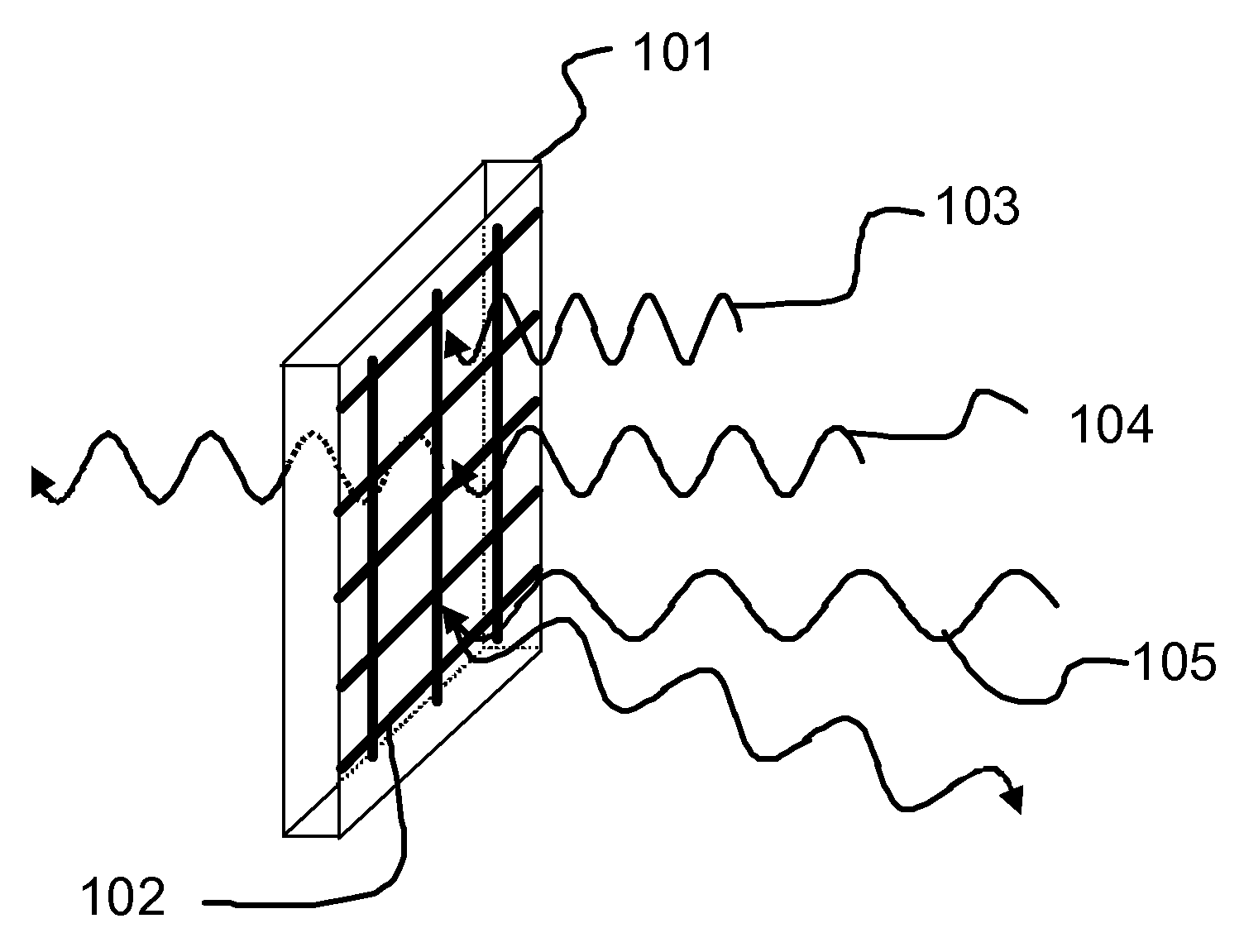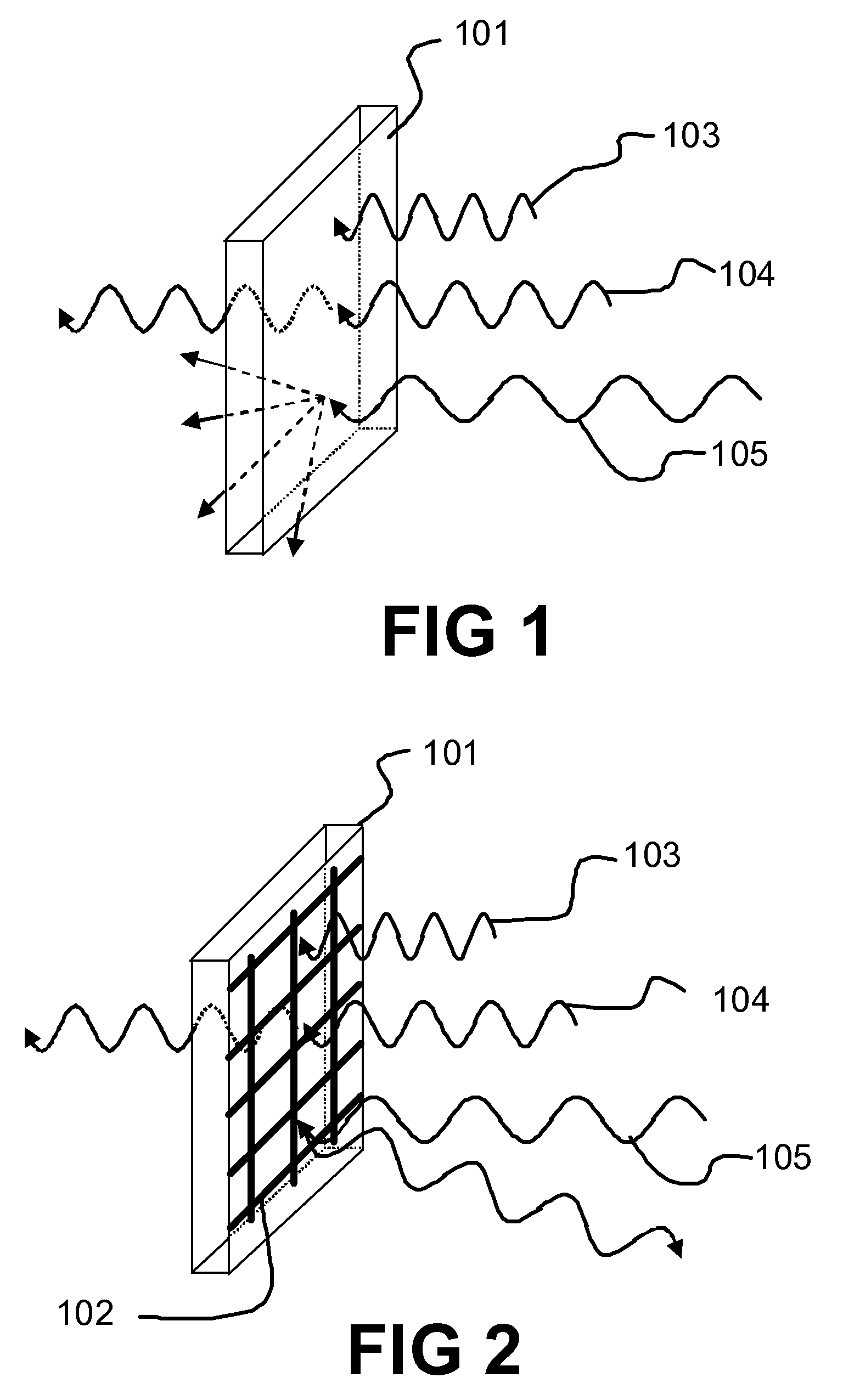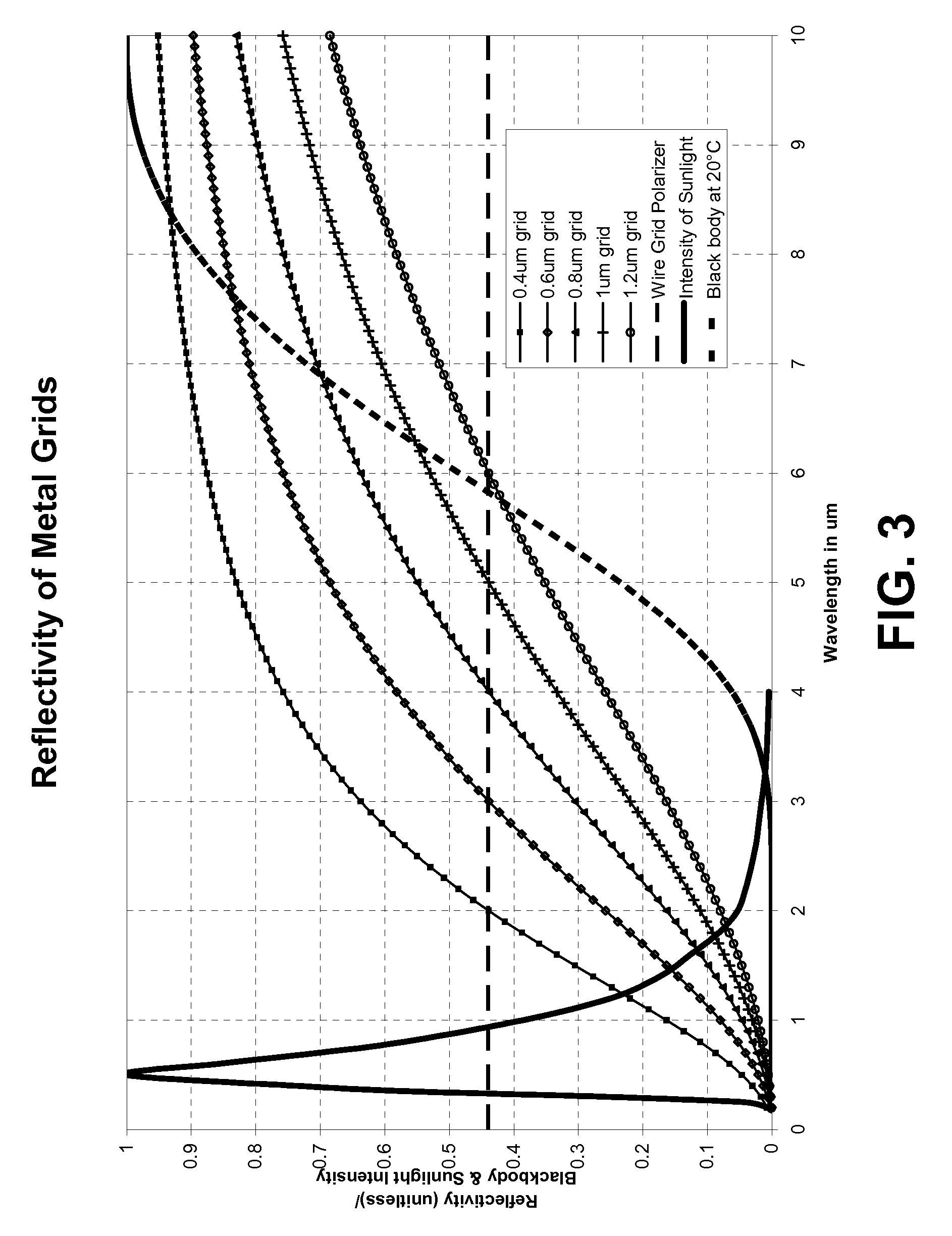Low-emissivity window films and coatings incorporating nanoscale wire grids
a low-emissivity, window film technology, applied in the direction of instruments, polarising elements, lighting and heating apparatus, etc., can solve the problems of reducing the solar heat gain through the pane, limiting the bandwidth of real-world materials to no more than a few hundred nanometers, and high reflectivity across a broad band of wavelengths. , to achieve the effect of increasing the effective insulation value of window glass, reducing emissivity, and high transmissivity to the solar spectrum
- Summary
- Abstract
- Description
- Claims
- Application Information
AI Technical Summary
Benefits of technology
Problems solved by technology
Method used
Image
Examples
Embodiment Construction
[0026]FIG. 1 is a schematic view of an ordinary glass or plastic windowpane 101. When struck by an ultraviolet photon 103, the windowpane 101 absorbs it, because ultraviolet wavelengths fall outside the transmission band of the window material. When struck by a photon 104 of near-ultraviolet, visible, or near infrared (NIR) light, the windowpane 101 transmits it through, because these wavelengths fall within the transmission band of the window material. When struck by a long-wavelength infrared (blackbody) photon, the windowpane 101 again absorbs it, because these long wavelengths fall outside the transmission band of the window material. However, in absorbing this energy the windowpane is locally heated, and therefore locally increases its own blackbody radiation according to the Stephan-Boltzmann law. Thus, blackbody photons may seem to “pass through” the windowpane, in either a collimated or a diffuse manner, as shown in the FIG. 1.
[0027]This behavior is normal and expected for t...
PUM
| Property | Measurement | Unit |
|---|---|---|
| Width | aaaaa | aaaaa |
| Distance | aaaaa | aaaaa |
| Distance | aaaaa | aaaaa |
Abstract
Description
Claims
Application Information
 Login to View More
Login to View More - R&D
- Intellectual Property
- Life Sciences
- Materials
- Tech Scout
- Unparalleled Data Quality
- Higher Quality Content
- 60% Fewer Hallucinations
Browse by: Latest US Patents, China's latest patents, Technical Efficacy Thesaurus, Application Domain, Technology Topic, Popular Technical Reports.
© 2025 PatSnap. All rights reserved.Legal|Privacy policy|Modern Slavery Act Transparency Statement|Sitemap|About US| Contact US: help@patsnap.com



